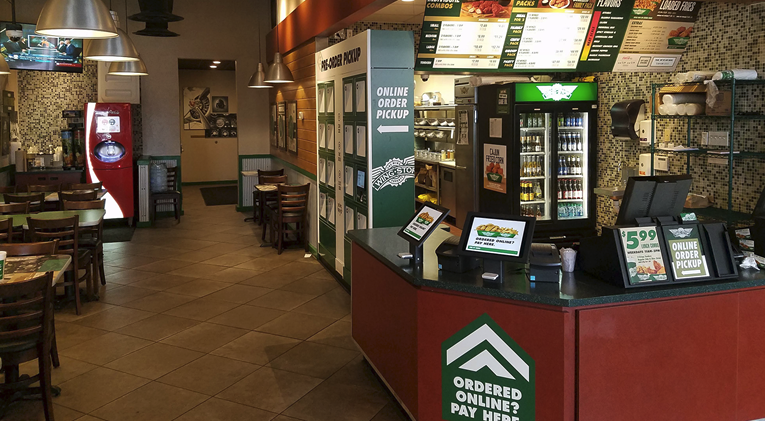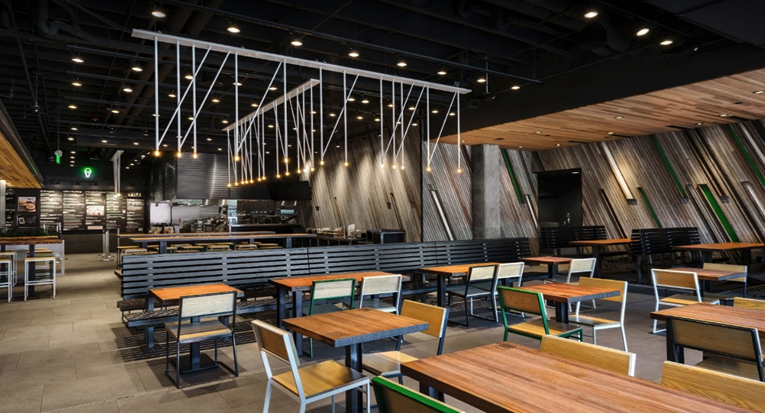by Joshua Pettman – Investment Analyst
US “fast-casual” restaurants Wingstop and Shake Shack have delivered very different operating results and returns on investment in their relatively short lives. The reason? Two very different approaches to selling fast food – with one proving to be a clear winner for investors.
Standing as a middle ground between “full-service” and “quick-service restaurant” (QSR) concepts, the power of “fast-casual” restaurants comes from their ability to blend experience with convenience at an attainable price point. This premiumisation of fast food has attracted customers in increasing numbers, with fast-casual concepts taking share from traditional QSRs such as McDonald’s at the low end, and sit-down dine-in chains such as Olive Garden in the mid-range.
Although they all fall under the same definition, fast-casual restaurants are anything but homogenous, with concepts spanning a range of cuisines from burgers to burritos and pizza to chicken wings. The varying approaches taken by different concepts can be illustrated by drilling down into the businesses of two fast-casual restaurants: Wingstop (chicken wings) and Shake Shack (burgers).
Wingstop is the largest fast-casual chicken wings-focused restaurant chain in the world, with over 1,700 locations.[1] Restaurants are characterised by small dining areas, B-grade real estate locations, and a simple menu with products made to order. Restaurants typically have five or six fryers with a capacity for two to four frying baskets, and a relatively simple kitchen layout that is accommodating to Wingstop’s relatively simple menu. The straightforward nature of these store operations has allowed Wingstop to franchise 98% of locations whilst keeping the customer experience consistent. A franchisee can expect to contribute an initial investment of US$400,000 to get their restaurant up and running, and will typically require three to five staff to manage a day’s operations.
Contrastingly, Shake Shack, a modern-day “roadside” burger stand known for its quality, is characterised by an urban footprint in premium real estate locations. Unlike Wingstop, the majority of Shake Shack restaurants (better known as Shacks) are company owned. Shake Shack was developed by professionals with backgrounds in fine dining. This fine-dining mantra is reflected in the quality of food and experience at Shake Shack. The beef is freshly ground every night and the burgers are made to order. Consequently, Shake Shack is far more operationally complex than Wingstop, and typically requires an initial investment of around US$2 million.
The differences in the nature of the food offered and the dining occasions they are suitable for are also substantial. Wings are a highly transportable product, especially when cooked fresh as Wingstop does. Both the meat and bone are heated to 165ºF, and during transportation, the hot bone continues to cook the wing from the inside, creating an evenly cooked product regardless of whether you eat it in store or at home. Wingstop’s wings are often ordered online and consumed off premises – especially for big sporting events. Conversely, burgers typically don’t transport well for off-premise consumption. When you dine at Shake Shack, it is often for the premium-quality burgers, and as a result, consumers typically dine in to enjoy the food at its best.
Wingstop’s off-premise dining occasion means they can keep occupancy related costs low, with the model well suited to 1,600 square feet with little seating in out-of-the-way cheap rent locations. In contrast, Shake Shack’s on-premise consumption means restaurants are typically ~3,500 square feet and situated in high-cost, high-foot traffic locations.
Fig. 1: Interior of a Wingstop restaurant

Source: winsightmedia.com
Fig. 2: Interior of a Shake Shack restaurant

Source: metropolismag.com
Similarly, Shake Shack’s complex kitchen results in higher labour costs. A further consequence of kitchen complexity was uncovered throughout the pandemic when restaurants were often operating with minimal staff. Shake Shack had to cut back on some of their menu offerings and prioritise the more-demanded items, cutting hotdogs and hand-spun “concretes” (dense frozen custards blended with toppings and mix-ins) from the menu. Wingstop stores, on the other hand, were able to maintain their full menus as their simplicity meant that even with a tighter labour market, Wingstop was able to fulfil the demand for their products. Shake Shack’s complex kitchen is further evidenced by the waiting times experienced during the dinner and lunch rush. Typically, it only takes eight minutes to prepare and cook a Shake Shack meal, far quicker than the 16 minutes it takes to prepare and cook Wingstop’s chicken wings. However, during the high-demand periods, Shake Shack’s ordering period can extend to 20-25 minutes. Comparatively, during the rush periods Wingstop can maintain their 16-minute preparation time.
The largest challenge Wingstop faces is the volatility in chicken wing prices. Wings are a by-product, with supply determined by the production of chicken breasts, regardless of the demand dynamics for chicken wings. Wings cannot be bought on fixed-price contracts, and spot rates have tended to be quite volatile. The company is thus investing in upstream capacity in an attempt to reduce this volatility for franchisees.
Wingstop’s simple operating model and relatively low capital expenditure (capex) outlay resulted in an industry leading annualised return on investment (ROI) of 79% for the franchisee based on figures for the quarter ending 30 June 2022.[2] Shake Shack had a similar restaurant EBITDA[3] margin (19% vs. 20% for Wingstop) over this same period, but must invest significantly more capital per unit, and thus derived a lower annualised ROI of 36%.[4]
Wingstop restaurants generate strong returns, allowing franchisees to consistently reinvest the cash flow to drive unit growth. During 2021, existing franchisees accounted for ~93% of restaurant openings, and on average, each franchisee operates six restaurants. Conversely, Shake Shack has had to raise capital and eat into their cash balance to maintain unit growth targets while posting annual losses at the corporate level in 2020 and 2021 (and expected for 2022).[5]
We have demonstrated how two fast-casual concepts have taken very different approaches to selling food, and this has resulted in varying returns on investment. Our goal as investors is to find compelling investment opportunities, and as a part of this process, we look to compare and contrast the characteristics of competing business models to determine which are more advantaged. Investors in the fast-casual space who have identified companies with advantageous characteristics have been impressively rewarded for their positioning, with solid outperformance compared with the overall restaurant sector, as highlighted in Fig. 3.
Fig. 3: Top 15 US-listed restaurants sorted by 5-year returns with dividends reinvested
Source: FactSet Research Systems, Platinum Investment Management Limited. Past performance is not a reliable indicator of future returns. As at 30 June 2022.
The Platinum International Brands Fund primarily invests in listed securities around the world with well-recognised consumer brands names and aims to provide capital growth over the long-term.
DISCLAIMER: This information has been prepared by Platinum Investment Management Limited ABN 25 063 565 006, AFSL 221935, trading as Platinum Asset Management (“Platinum”). While the information in this article has been prepared in good faith and with reasonable care, no representation or warranty, express or implied, is made as to the accuracy, adequacy or reliability of any statements, estimates, opinions or other information contained in the article, and to the extent permitted by law, no liability is accepted by any company of the Platinum Group or their directors, officers or employees for any loss or damage as a result of any reliance on this information. Commentary reflects Platinum’s views and beliefs at the time of preparation, which are subject to change without notice. Commentary may also contain forward looking statements. These forward-looking statements have been made based upon Platinum’s expectations and beliefs. No assurance is given that future developments will be in accordance with Platinum’s expectations. Actual outcomes could differ materially from those expected by Platinum. The information presented in this article is general information only and not intended to be financial product advice. It has not been prepared taking into account any particular investor’s or class of investors’ investment objectives, financial situation or needs, and should not be used as the basis for making investment, financial or other decisions. You should obtain professional advice prior to making any investment decision.
[1] Source: Wingstop Restaurants, Inc. – About Us
[2] Return on investment (ROI) is a measure of a company’s profitability and the efficiency with which its capital is employed. Source for Wingstop ROI: Company report.
[3] Earnings before interest, taxes, depreciation and amortisation (EBITDA) is a measure of a company’s operating profitability, i.e. the earnings it generates in the normal course of doing business, ignoring capital expenditures and financing costs. It is usually calculated as revenue minus expenses (excluding tax, interest, depreciation and amortisation). The EBITDA margin is calculated as a percentage of average unit volume (AUV).
[4] Source: Company reports, Platinum Investment Management Limited. Data as at end of June quarter 2022.
[5] Source: Company reports. Data as at end of June quarter 2022.













